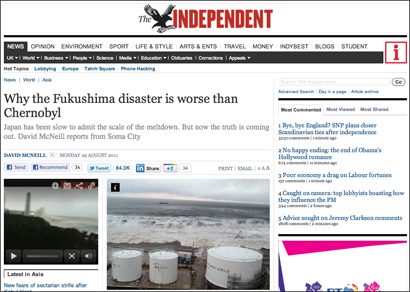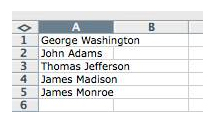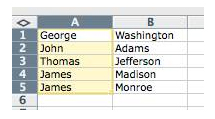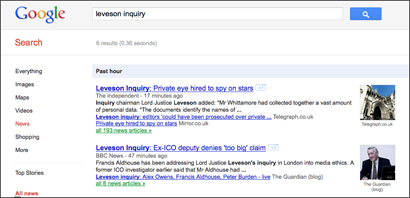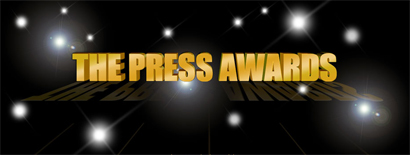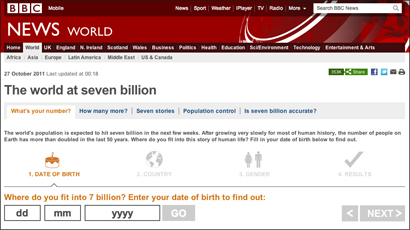
Facebook last week published a list of the most shared articles on Facebook in 2011. That list included only US publishers – so we decided to create a list of the most shared, liked and commented articles from UK news outlets.
This list is based on data from SEO and social data tool Searchmetrics.
As with the US list, stories range from hard news to quirky (or “cute”, as Facebook describes them). Interestingly, the two top stories are newsgames, where the reader is invited to participate using gaming mechanics. (It’s worth mentioning here that there will be a session on newsgames and gaming mechanics at our news:rewired conference for journalists, for which the agenda is here.) The list also includes online video (another news:rewired topic).
The top 10 most shared, commented and liked Facebook news articles of 2011:
1. BBC: The world at 7 billion = 339,149 (shares, comments and likes)
2. Guardian: Charlie Sheen v Muammar Gaddafi: whose line is it anyway? = 219,023
3. Mail Online: Amy Winehouse, 27, found dead at her London flat after suspected ‘drug overdose’ = 190,498
4. BBC: Austrian driver allowed ‘pastafarian’ headgear photo = 167,754
5. BBC: Japan earthquake: Tsunami hits north-east = 159,023
6. BBC: Breast milk ice cream goes on sale in Covent Garden = 149,509
7. BBC: Osama Bin Laden, al-Qaeda leader, dead – Barack Obama = 146,244
8. BBC: Drunk Swedish elk found in apple tree near Gothenburg = 146,182
9. Mail Online: Robber who broke into hair salon is beaten by its black-belt owner and kept as a sex slave for three days… fed only Viagra = 145,413
10. BBC: London rioters: ‘Showing the rich we do what we want’ = 131,839
Top 10 most shared news articles on Facebook in 2011
1. BBC: The world at 7 billion = 147,000
2. Guardian: Charlie Sheen v Muammar Gaddafi: whose line is it anyway? = 65,820
3. BBC: Japan earthquake: Tsunami hits north-east = 60,238
4. BBC: Austrian driver allowed ‘pastafarian’ headgear photo = 54,800
5. BBC: Drunk Swedish elk found in apple tree near Gothenburg = 44,700
6. BBC: Osama Bin Laden, al-Qaeda leader, dead – Barack Obama = 38,891
7. BBC: Speed-of-light results under scrutiny at Cern = 36,700
8. BBC: London rioters: ‘Showing the rich we do what we want’ = 36,500
9. Mail Online: Meet the blind Great Dane in need of a home (but you’ll need to make space for HER huge guide dog) = 34,600
10. BBC: Amy Winehouse: Tributes paid to dead singer = 31,400
Top 10 most ‘liked’ articles on Facebook
1. BBC: The world at 7 billion = 75,619
2. Mail Online: The 9/11 rescue dogs: Portraits of the last surviving animals who scoured Ground Zero one decade on = 62,458
3. BBC: Austrian driver allowed ‘pastafarian’ headgear photo = 61,306
4. BBC: Drunk Swedish elk found in apple tree near Gothenburg = 51,618
5. BBC: Osama Bin Laden, al-Qaeda leader, dead – Barack Obama = 49,882
6. BBC: The world at 7 billion = 47,449
7. Mail Online – Beauty in every grain: For the first time remarkable photographs reveal hidden charms of ordinary SAND = 43,760
8. Mail Online: Robber who broke into hair salon is beaten by its black-belt owner and kept as a sex slave for three days… fed only Viagra = 42799
9. Mail Online: Cheeky monkey! Macaque borrows photographer’s camera to take hilarious self-portraits
10. The Sun: Frankie Cocozza
kicked off X Factor
Top 10 most commented news articles on Facebook in 2011
1. Mail Online: Amy Winehouse, 27, found dead at her London flat after suspected ‘drug overdose’ = 127,396
2. BBC: The world at 7 billion = 116,530
3. BBC: Breast milk ice cream goes on sale in Covent Garden = 108,258
4. Guardian: Charlie Sheen v Muammar Gaddafi: whose line is it anyway? = 105,754
5. BBC: London rioters: ‘Showing the rich we do what we want’ = 73,350
6. BBC: Amy Winehouse: Tributes paid to dead singer = 72,313
7. Mail Online: Robber who broke into hair salon is beaten by its black-belt owner and kept as a sex slave for three days… fed only Viagra = 71,514
8. BBC: Japan earthquake: Tsunami hits north-east = 68,830
9. Independent: US preacher warns end of the world is nigh: 21 May, around 6pm, to be precise = 67,388
10. BBC: Speed-of-light results under scrutiny at Cern = 59,824
Data was gathered using Searchmetrics and downloaded for analysis on 6 December. The news outlets included were: BBC, Guardian, Telegraph, Independent, Mail Online, the Sun, the Mirror. You can see the downloaded Facebook data here.

